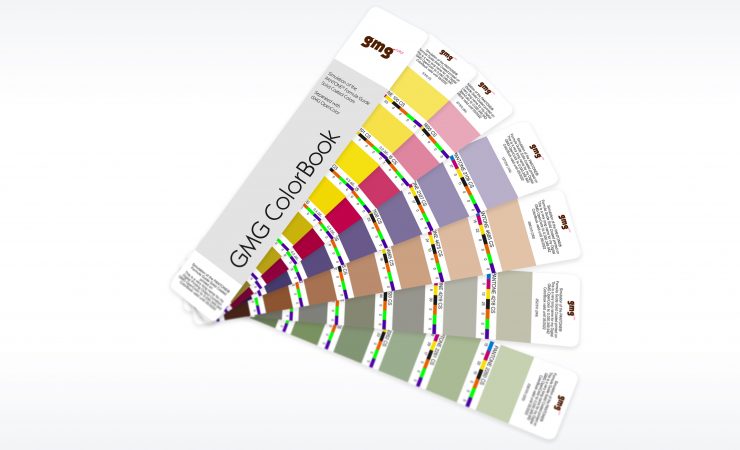GMG has introduced ColorBook, an option that allows users of its ColorServer and OpenColor technologies to print swatch books of Pantone or custom colours on their digital presses to demonstrate how well the reference colours can be reproduced on their own equipment on any given stock.
The swatches produced this way can be used as sales tools to demonstrate colour ‘competence’ in digital print and as design aids to provide a realistic preview of the results that can be expected. The software supports digital presses with four to seven colours.
Peter Schöffler, product manager at GMG, explained, ‘In digital printing, GMG ColorBook is a Pantone-licensed colour reference for simulating Pantone and custom brand colours based on a precise set of real print conditions. We’re not talking about a regular colour guide, but one created on your own press – in real printing conditions. In short: GMG ColorBook shows the actual end result because GMG ColorBook is produced under production conditions, on the same press, using the same inks, and on the production substrate.
‘From design to prepress… from the pressroom to the clients and brands… if everyone’s expectations are aligned, we create reassuring process reliability from start to finish,’ he added.
GMG UK marketing manager Amy Young told Digital Printer, ‘ColorBook uses the same format and page layout as the Pantone guide for an easy, direct comparison. Under each colour it gives the exact ink combination (colour separation) used to reproduce the spot colour. If the spot colour reference colour value is out of gamut, GMG ColorBook tells you, and by how much (in delta E), using the separation rule from GMG OpenColor.’
There are three options within the GMG OpenColor line, covering custom colours, Pantone packs of five colours which permit the creation of five ‘swatch’ PDFs which may be printed unlimited number of times, and a bundle of both. The capability is included with GMG ColorServer, where the swatch PDF can be dropped into a hot folder for inspection and output. Further options for handling the colour reproduction then become available, including minimising the number of inks used, restricting low ink coverage or using a specific set of inks/toners to reproduce a series of spot colours.

